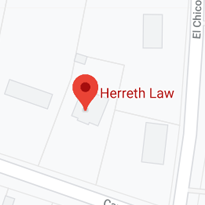 A defective roadway may have been partially responsible for a fatal collision in Burleson.
A defective roadway may have been partially responsible for a fatal collision in Burleson.
According to police and witnesses, a northbound vehicle drifted across a cable median and onto the southbound side. The two-vehicle collision became a pile-up crash, and first responders airlifted multiple victims to area hospitals. Two of these victims, 34-year-old Noe Gomez and 66-year-old Gloria Escobar, did not survive.
Police stated that a gap in the cable allowed the vehicle to cross the median.
Head-On Wrecks in Tarrant County
These collisions generally cause catastrophic injuries. Furthermore, these claims are legally intricate, mostly because of the last clear chance defense.
All drivers have a duty of care. This duty includes a responsibility to avoid crashes when possible. So, if a driver has a chance to avoid a crash but does not do so, that driver violates the duty of care. The last clear chance rule comes up a lot in head-on and rear-end crashes.
However, this rule does not always apply. The driver must have the last clear chance to avoid the crash, and not just any possible chance.
Dangerous Curves and Vehicle Collisions
If a street or highway is defectively designed or maintained, the governmental unit responsible for that roadway may be liable for damages. This same conclusion applies if a transit bus driver causes a car crash.
Because of the sovereign immunity doctrine, these claims are extremely complex. Only highly-experienced Fort Worth personal injury attorneys should handle them.
Once upon a time, this legal rule gave all government officials absolute immunity from lawsuit. The doctrine is much more limited today, but it still usually applies, particularly with regard to discretionary acts.
Discretionary acts are basically judgement calls. In the vehicle collision context, putting a stoplight at an intersection is a discretionary act. It is difficult, but not impossible, to file negligence claims in these situations.
Maintaining that stoplight, on the other hand, is a ministerial act. The same thing may apply to a gap in a cable median on an interstate. In these situations, it is easier to file negligence claims.
Procedurally, victims must typically file claims with the responsible agency. Then, government lawyers review the claim and decide whether or not to settle it. If the parties cannot resolve the matter, the victim/plaintiff may file legal paperwork in court.
Texas is a modified joint and several liability state. If there are multiple responsible parties, the judge usually apportions damages among them based on their percentage of fault.
Defective roadway claims are extremely complex. For a free consultation with an experienced personal injury attorney in Fort Worth, contact Herreth Law. Attorneys can connect victims with doctors, even if they have no insurance or money.

